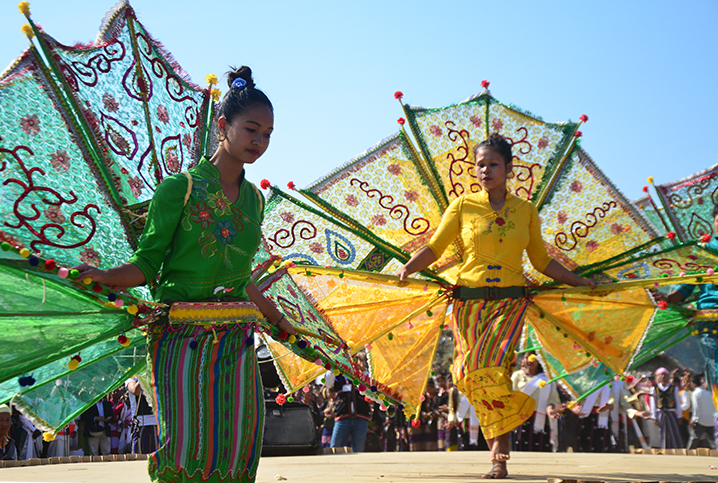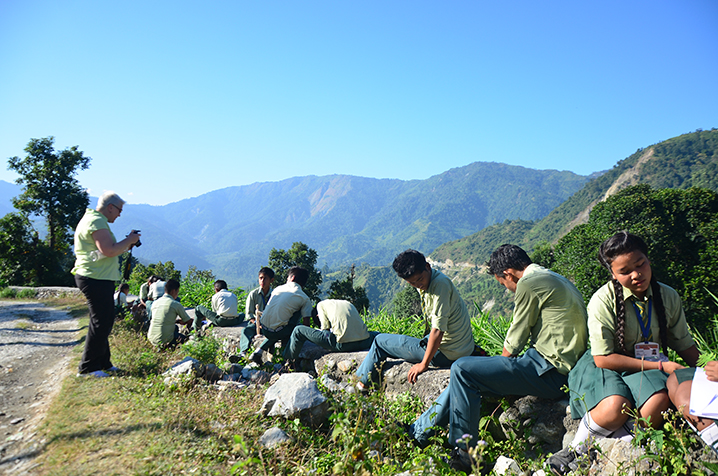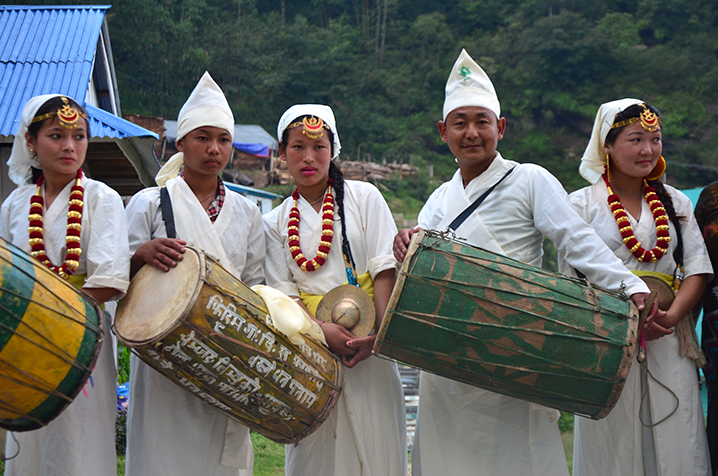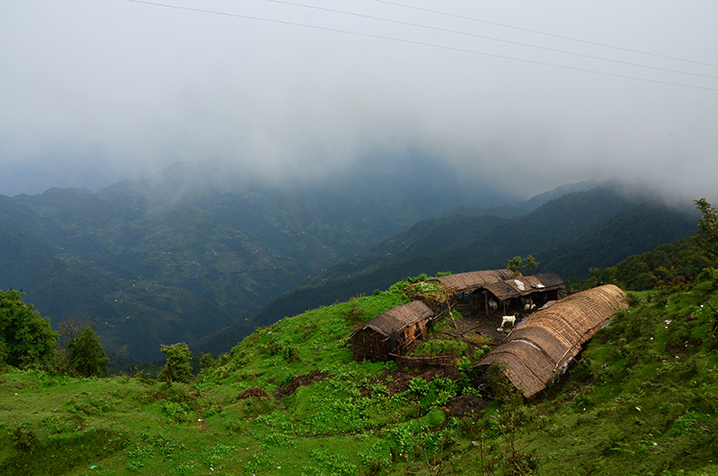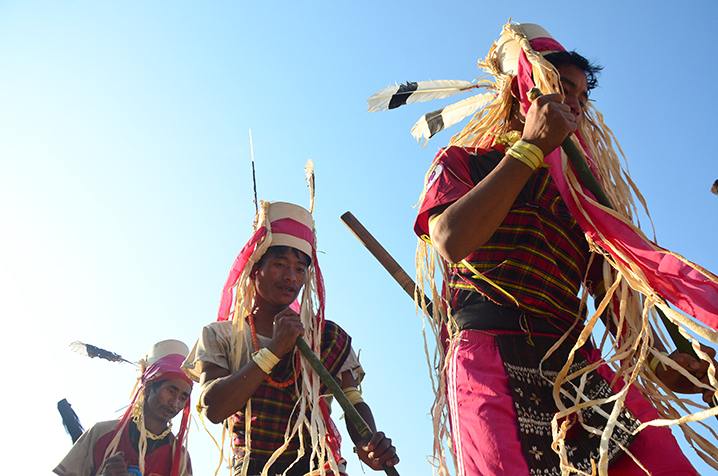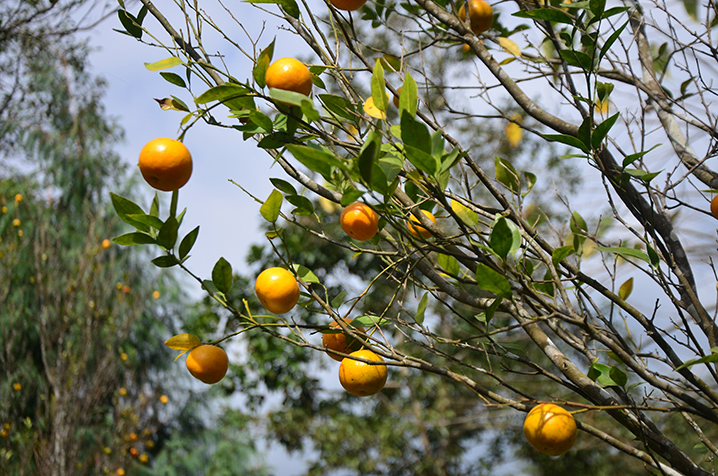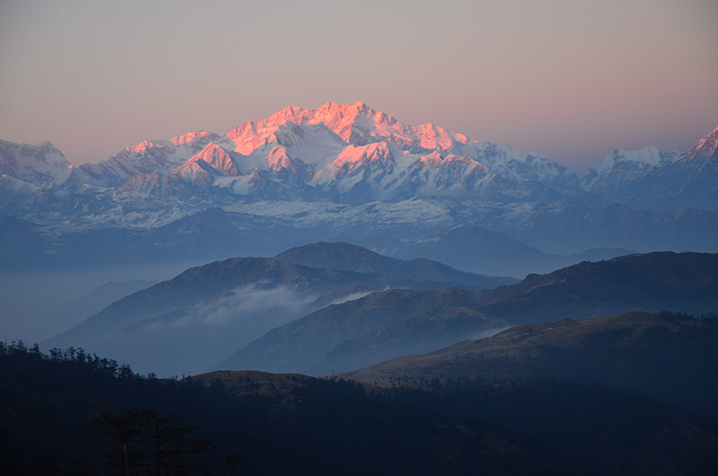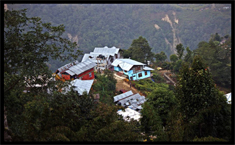Travels with us...
Enter Your Search Text :
"27 Years of weaving tourism consciousness in villages, empowering ecological pride and economical freedom"
... [+]Voluntourism : Eastern Nepal and Cross-Border Circuit
Voluntourism is one of the tool of tourism, which is mainly an initiative when both the tourism institution and tourists agrees to support the community, destination or a village with different social ... [+]Lingsey Kalimpong
Lingsey a remote village of Kalimpong Sub-Divison is situated at an altitude of 4800 ft. and is 24 km from Pedong & 52 km from Kalimpong Coordinates: 27°9\'46"N 88°40\'29"E. It is ... [+]
Neora Valley Jungle Camps
Neora Valley National Park :
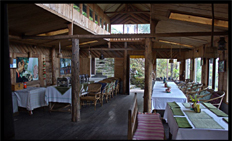
It is one of the last remaining pristine ecosystems of the Eastern Himalayas with its amazing Bio-diversity, and is home to many rare and endangered plants, animals and birds. It exhibits a rich variety of habitat as the area comprises the catchments and watershed of the Neora River with its tributaries. The Park with its dense forests is located on the tri-junction of Bhutan, Sikkim and West-Bengal, and its boundary extends from 30 m of altitude up to 3200 m on an area of only 88 square km. Though this sounds rather small, it has to be considered that due to the topographical features the surface of the Park is much larger.
Fauna:
Significance of Neora Valley National Park in the international context lies in the fact that it provides shelter and protection to various species of Wildlife included in the Red Data Book (R.D.B.) of IUCN and the appendices of CITES. The Park harbours more than 31 species of mammals, which include the Red Panda, Clouded Leopard, Goral, Wild Dog, Himalayan Black Bear, Leopard, Leopard Cat, Himalayan Thar, Royal Bengal Tiger.
Avi-fauna :
Neora Valley National Park is extra ordinarily rich in avi-fauna. Due to its change in altitude at places, various species of birds make the park a paradise for bird watchers. There are more than 106 species including many rarities.
Orchids :
Nature has gifted Neora Valley with variety of colourful Wild Orchids. One can get a glimpse of these magnificent floras from 600 feet to 10,000 feet. Some of the Orchids recorded in the Neora Valley National Park, belong to the genus, Bulbophyllum, Cymbidium, Celogyne, Dendrobium, Eira, Gastrochilus and Pleione.
Neora Valley Jungle Camp :
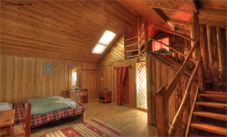
Aiming to safeguard wildlife protection in one of India's young and lesser known Protected Areas, the Neora Valley Jungle Camp is one step towards sustainable development options in this remote area.The endangered Red Panda has lost parts of its natural habitat. Bamboo as the main feeding plant had been replaced by other plants, often timber trees. Additionally, population growth is resulting in increasing demand for settling area. Converting the present situation into the establishment of a community forest reserve is the paramount goal of the initiative. Communities have started reforestation and the need for improved education and entertainment facilities for the youth that before shot birds with their catapults as a time-pass has been addressed. The Neora Valley Jungle Camp, one of our signature lodges, is located at an altitude of 1868m at the picturesque Kolakham village, on the fringe of Neora Valley National park. The lodge is built with minimum interference to the natural environment of the jungle and boasts of a sophisticated combination of local atmosphere and modern amenities. Situated on a hill above Kolakham village, it consists of three four-bedded attics, one double-bedded honeymoon cottage, plus 02 comfortable Swiss tents. A tastefully furnished dining cum commons area with an attached tea room cum library is guaranteeing community without hampering the desire for privacy. All buildings are constructed by the local artisans, in ethnic style with maximum usage of local materials such as wood, bamboo, stone and brick. Good weather conditions provided, majestic Mount Kanchenjunga, the world's third highest peak, can be seen atop the lush green valleys. Staffs for kitchen, service, housekeeping, maintenance and guiding come from near-by Kolakham village. After intensive training they today add a local note to the hospitality at the camp.
Cuisine :
Fresh and organic ingredients from adjoining farms are combined into traditional meals of the Nepali cuisine. Continental and Indian dishes are available on demand.
Activities & Experiences :
Bird watching: More than 200 species of birds have been recorded in the area. One can have excellent birding opportunities in the lodge itself. Besides, there are numerous walks through the terraced fields and excellent trails from the lodge into thickly wooded forest which are extremely rewarding. Guided birding trips to the National Park can be organized against advance booking.
Trek :
There is ample opportunity to enjoy short and long treks from the lodge with numerous trekking trails across the village of Kolakham, along the boundary of the park or even inside the forest. The trek to Chaggey waterfalls, in particular, is of worth mentioning. Along the trek you will find a lot of diverse landscapes, flora and fauna. There are deep ravines created in the monsoon seasons and small spring water streams along the way.
Village tour :
The Rai community of Kolakham village is extremely hospitable. They heartily welcome all visitors to their village and homes. You can spend a whole day visiting their houses and farms; interact with them to understand the deep-rooted culture and community life of this beautiful Himalayan village. Cardamom is a major crop and guests can observe the processing of the fresh fruit into the roasted spice. Some villagers still know the techniques of weaving maize and paddy straw into sitting mats. Performances of local dance and music groups allow insights into the rich culture of the Rai community.
Excursions :
Several day trips or excursions are possible from the Jungle Camp. The Lava Buddhist monastery and the local market would be quite interesting to visit. A tea tour to Samybiong Tea Estate can be arranged against advance booking. Doing nothing: The surrounding atmosphere of the Jungle Camp is so charming and quiet that one can spend the whole day sitting in the terrace and listening to the call of birds, or watching the butterflies fluttering around the myriad plants and flowers. The valley looks spectacular when clouds engulf the mountains before the sun set.
Responsible Tourism :
Various self-help groups like sewing, craft making or processing of organic food products, cultural performance have been initiated to provide alternative and additional livelihood options for the villagers. The Jungle Camp has adopted the Kolbung Primary School and sponsored the new school building, class rooms and community hall through voluntourism projects. Family planning workshops are offered to address the problem of unintended population growth. In order to establish a community owned reserve forest 1 000 tree seedlings have been distributed and planted during a great ceremony in summer 2007. Aim of this measure is to add natural resources to the village's assets, thus extending the Red Panda's habitat. Local youth is educated about the wildlife through SWAP (Save Wildlife Awareness Programme). Besides the villagers themselves, the community tourism project is supported by the Forest Department, the travel trade, a population planning NGO, various bird watching groups and few private sponsors.
Birding, nature walks, village walks, Jungle Trail country boating and car ride
Room Tariff (effective from 1st April 2023) :
|
Meal Plan |
(MAP) (AP) (Dinner and breakfast) (All meals) |
|
|||
|
Room Type |
Single |
Double |
Single | Double | |
|
Double Cottage (Shama, Kalij, Monal ) (104,105 & 106 ): |
6000 |
6000 |
7000 | 7000 | |
|
Attic Cottage (Shikra & Besra) (102 & 103): |
7000 |
7000 |
8000 | 8000 | |
|
Attic Cottage (Niltava) (101): |
7500 |
7500 |
8500 | 8500 | |
|
Extra person above 06 years in any room |
1800 |
2300 |
|
||
Nearest Airport :
Bagdogra (4 hours)
Nearest Rail Head :
New Jalpaiguri Station, which is connected by long-distance trains with all metro and major cities of India (4 hours)
Address :
Kolakham Village
Lingesykha Gram Panchayat
P.O. Lava
Kalimpong

